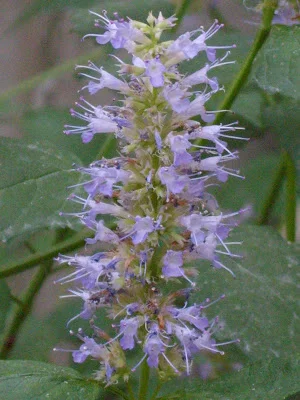The contents itself, while somewhat difficult to navigate at first, is informative and useful, each herb entry containing information for that plant’s common, scientific, and folk names, associated gender (masculine/feminine), ruling planet, element, and sometimes deity, and associated magical uses, rituals, and powers.
PSA: Covid-19 & Herbalism | Responsible Medical Ethnobotany
…In our planet’s current health climate, it is important to keep a level head and understand what we’re dealing with. While I am completely in favor of people taking care of their own bodies and doing what they can to maintain their health through natural botanical and supportive means (previous medical ethnobotany posts), right now is not a time to be taking health into your own hands. …
Bring in the May
Giant Hyssop (Agastache rugosa)
Purple Giant Hyssop, Wrinkled Giant Hyssop, Korean Mint, Blue Licorice, huò xiāng (藿香), bangsnnip (방아잎), Patchouli herb--whatever regional name is chosen, they all refer to the same plant: Agastache rugosa (Fisch. & C.A.Mey.) Kuntze. For purposes of this post, the two most abundant names I found were (Purple) Giant Hyssop and Korean Mint, hence the top-title billing.





